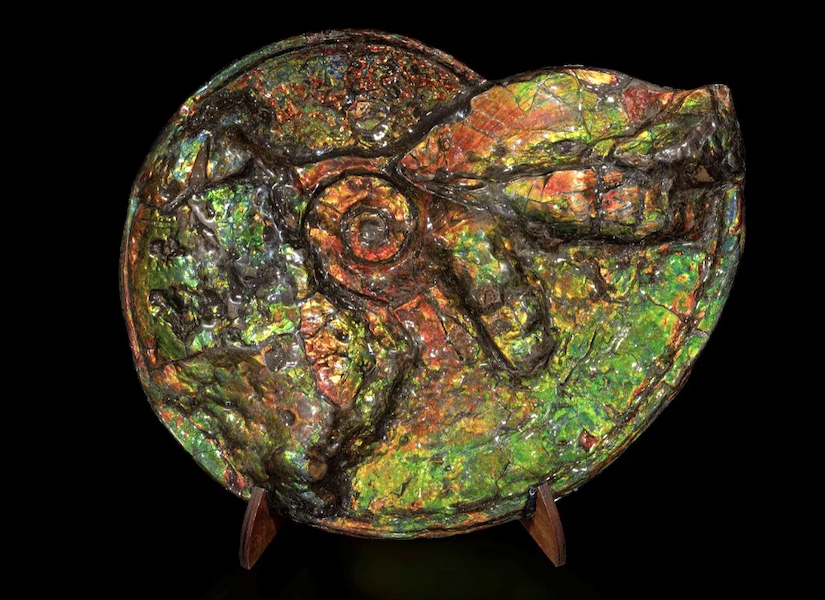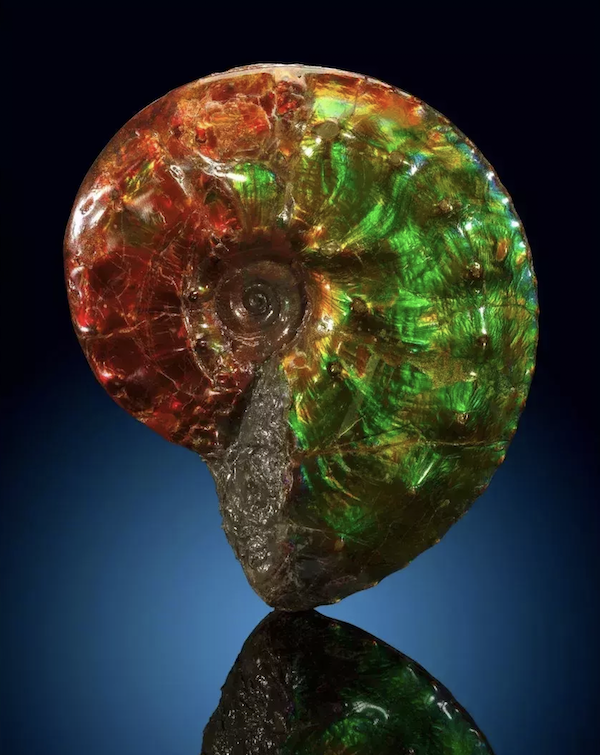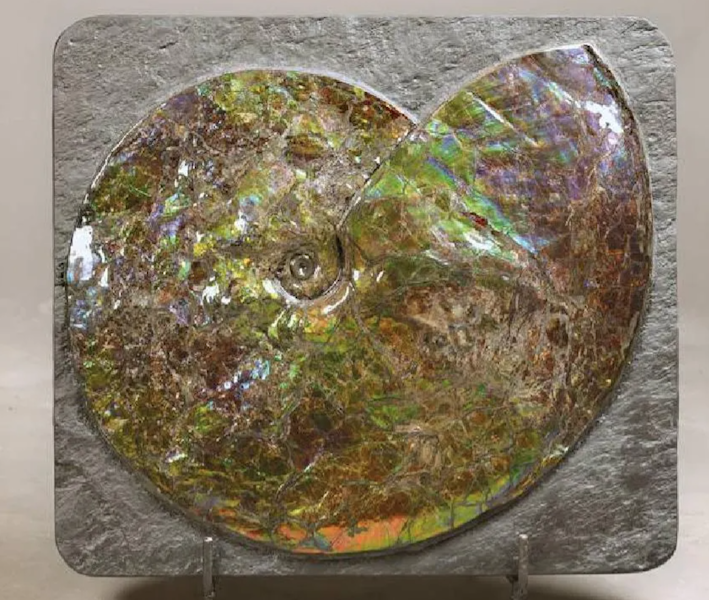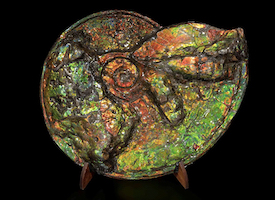
NEW YORK — Natural history represents a large segment of the collecting market, and fossils are of major interest. Many of the best examples are rightfully in museum collections — think Sue the T-Rex skeleton at Chicago’s Field Museum or the Smithsonian Museum of Natural History’s Fossil Hall with more than 700 fossils. Among the most alluring and intriguing varieties of fossils are ammonites, which are immediately recognizable for their spiral-shaped shells.
Ammonites are extinct sea creatures that belong to the cephalopod group. While they look more like their distant living cousin, the nautilus, a mollusk with a beautiful shell, they are more closely related to other cephalopods, which today includes octopi, squid and cuttlefish.
“The modern cephalopods have more or less lost their shells … but in the past various cephalopods had an external shell and ammonites are a classic example,” said Dr. Paul A. Johnston, a professor in the department of Earth and Environmental Sciences at Mount Royal University in Calgary, Alberta. He added, “They lived in the Mesozoic era pretty much from the start of the Jurassic period and they disappeared when the dinosaurs went extinct.”

Ammonites lived in oceans all across the planet, and while it is hard to know exactly what they ate, Johnson said they likely were predators of crustaceans. “The ammonites would have been like today’s nautilus. They had a coiled shell with an opening at one end and their head and tentacles would protrude,” he said. “These were swimming animals, they didn’t crawl around on the bottom.”
While ammonites have been found at dozens of ocean sites, a cluster of highly iridescent ones discovered in a small area of southern Alberta is noteworthy for their vibrant coloration not seen elsewhere, making them desirable to collectors. The best southern Alberta examples can bring in excess of $20,000 apiece. An iridescent ammonite excavated from the Bearpaw Formation in Alberta attained $22,651 plus the buyer’s premium in February 2021 at Cambi Casa D’Aste. The deposits of this region have been quarried for decades by mining companies through a permitting process.

While ammonites are cleaned and polished after they are dug up, those cosmetic improvements do not impart the iridescent hue; Johnson said the process that gives the fossils their spectacular coloration remains a mystery. “This is something that appears to have happened after burial … there was some geological alteration of the shell that increased the iridescence,” he said, noting this same iridescence is seen in the mother-of-pearl layer lining abalone shells.
“With the colorful ammonites from southern Alberta, it’s the mother-of-pearl layer that has this brilliant iridescence that has been enhanced after burial by geologic processes, possibly some mineral enrichment and perhaps squeezing of the layers a little closer together within the shell,” he said. “In actual fact, it’s not really clear why the Alberta ammonites are so iridescent, and it’s restricted to a rather small area of southern Alberta. This type of preservation has so far not turned up anywhere else.” The Bearpaw Formation is named after the Bears Paw mountain range in Montana, but iridescent ammonites aren’t found that far south.

Even iridescent ammonites that don’t sport the full rainbow spectrum perform well. A mostly green iridescent example, preserved in a block of bedrock, brought $19,415 plus the buyer’s premium in February 2018 at Henry’s Auktionshaus AG.
Collectors are also taken with the logarithmic spiral shape of the ammonite shells, Johnson said. “Their shells certainly have aesthetic value, the ammonite grew in a spiral that aesthetically is quite a pleasing shape. It’s also something that I think people recognize right away that this is an animal from the past so it’s kind of a link to deep time.” Another fine example, having a very opalescent red and green sheen, made $17,258 plus the buyer’s premium in February 2022 at Bertolami Fine Arts.

Not all ammonites consist of round coils. A heteromorph ammonite is one whose shell is not in the typical spiral shape. A highly sculptural example is a Mesozoic open coil heteromorph ammonite fossil that realized $4,000 plus the buyer’s premium in May 2018 at Artemis Gallery. This large ammonite, 14¾ by 17½in, came from North Africa and dates to the mid-Cretaceous period.
Heteromorph ammonites, which can be described as “uncoiled” ammonites, are less common than those with a solid coil. “This type of heteromorph ammonite features an open coil with space in between each whorl to the center,” the gallery wrote in its catalog description, adding that these circular varieties are more scarce than the J-shaped open coil specimens that have been found in the same region.

Ammonites need not be whole to be coveted. Jewelry designers pursue ammonite fragments to include in their glittering confections. “While some of these things are retained in their three-dimensional shapes, some of them have been crushed, kind of like ammonite roadkill,” Johnson said. “After burial, the sediment compressed and flattened them completely, so they are not of scientific value, but they can still be cleaned up, polished and cut up to be used in some kind of jewelry.” A 14K gold man’s ring centered on an iridescent ammonite sold for $1,400 plus the buyer’s premium in September 2021 at Riverside Galleries.
Johnson says that ammonites have become a big industry in southern Alberta, and this material is now the official gemstone of Alberta under the trade name of ammolite. “All ammolite are pieces of ammonite of this particular iridescent quality,” he added.
Ammonites provide collectors with a physical, genuine link to impossibly distant eras of time. Their deft marriage of art and science also makes for an ideal conversation piece.



